Picture of Dark Blue Shirt With Black Suit
Anatomy of a Bruise
Medically Reviewed by Melinda Ratini, DO, MS on June 29, 2021
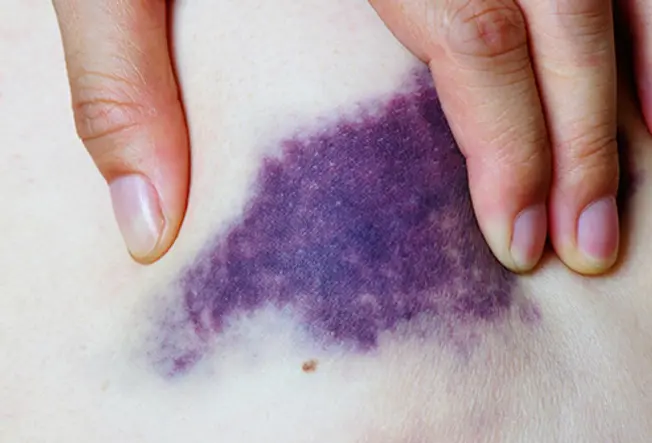
Those Colorful Marks
1/13
We all get a bruise from time to time -- maybe you walked into the doorjamb in the middle of the night or tripped over the dog on your morning walk. Most aren't anything to worry about and heal on their own. Others can be a sign of something more serious. It's good to know the difference between them.
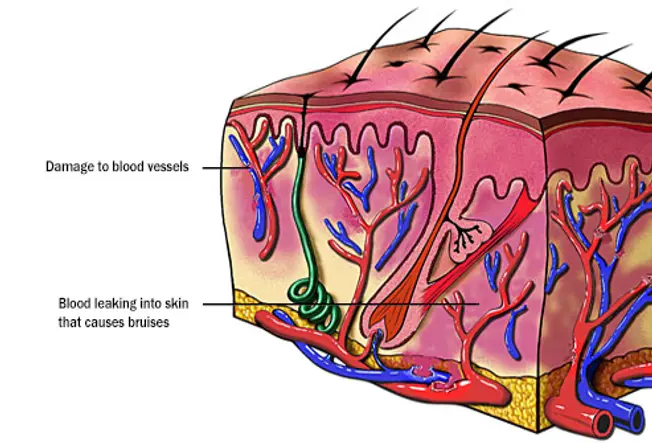
Why Do They Happen?
2/13
A bruise shows up when an injury makes small blood vessels under your skin bleed. Your skin isn't broken, so the blood doesn't have anywhere to go. It pools and forms clots and changes the color of the skin above the injury. Harder blows tend to cause bigger bruises -- also called contusions. They may be tender or hurt badly.
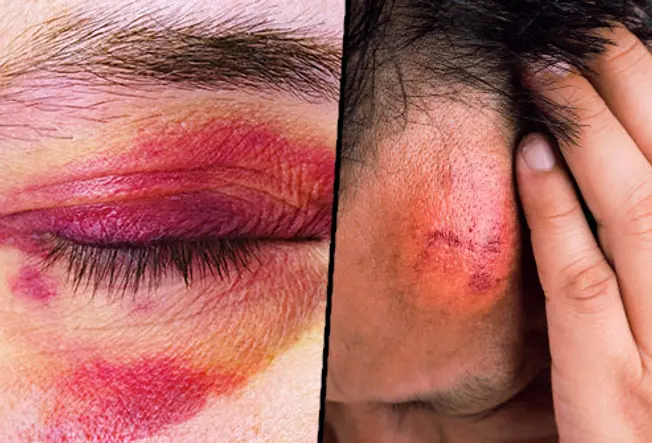
Types of Bruises
3/13
A flat, purple bruise that happens when blood leaks into the top layers of your skin is called an ecchymosis. A black eye, or "shiner," is an example of this kind of bruise. A hematoma happens when clotted blood forms a lump under your skin. The area is usually swollen, raised, or painful. A "goose egg" on your head is one example. A hematoma is not the same thing as a hemorrhage -- that's heavy bleeding inside or outside your body.

Many Colors
4/13
As you heal, an iron-rich substance in your blood -- called hemoglobin -- breaks down into other compounds. This process makes your bruise change colors:
• It's usually red right after the injury.
• Within a day or two, it turns purplish or black and blue.
• In 5 to 10 days, it may be green or yellow.
• In 10 to 14 days, it's yellowy-brown or light brown.
It should fade away totally in about 2 weeks.
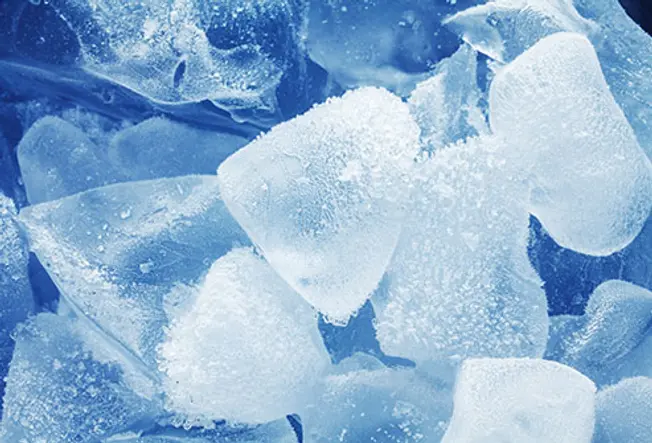
What to Do About Them
5/13
Cold can help with swelling and may shrink the size of your black-and-blue mark. It also slows blood flow to the area, so less of it ends up leaking into your tissues. When you first get a bruise, take a bag of frozen veggies or fill a plastic bag with ice, wrap it in a towel, and gently put it on the injured area. Leave it there 15 to 20 minutes, take it off for 30 minutes or so, then put it back on.

Elevate and Heat
6/13
Rest your injured limb and raise it above your heart if possible. For example, if you banged your shin, keep your leg propped up. This will keep blood from pooling, help with swelling, and keep your bruise from getting bigger. After 2 days, use a heating pad or warm cloth to put heat on the area. Take an over-the-counter pain reliever, like acetaminophen or ibuprofen, if you need it.
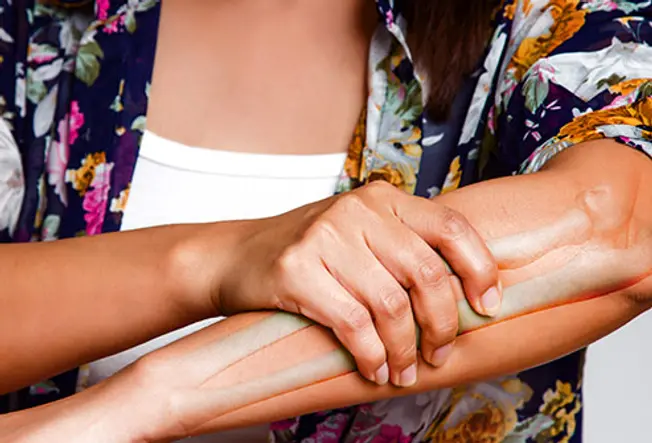
Bone Bruise
7/13
Your bones are made of tissues, too, so they can bruise. Any kind of injury can cause one, like a sports injury or car crash, and some medical conditions, like arthritis, can make you more likely to get one. Signs of this kind of bruise are the same as other kinds -- pain, tenderness, swelling, and color change -- but it usually hurts more and lasts longer. You treat it the same way: Rest it, ice it, raise it, and use pain relievers.
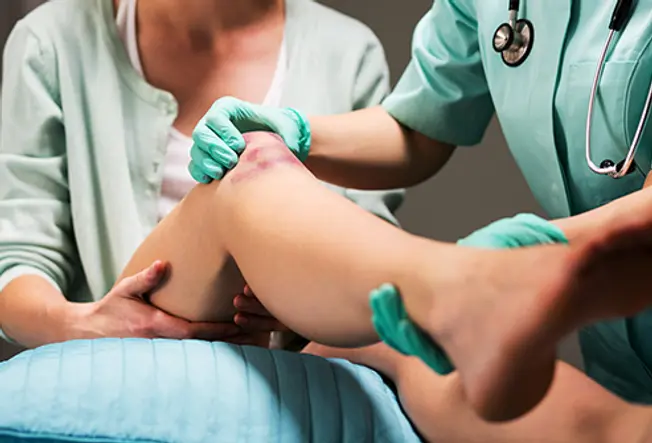
When to Call the Doctor
8/13
A bruise can need medical care if:
- You think a sprain or broken bone may have caused it.
- It keeps getting bigger after the first day.
- It makes your arm or leg swollen or tight.
- It lasts for more than a couple of weeks or shows up again for no reason.
- It's around your eye and you have a hard time seeing or looking in different directions.
- You got it from hitting your head, trunk, or belly.
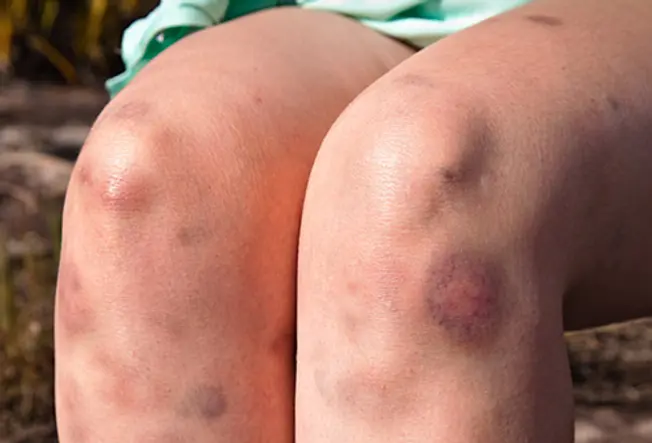
Why Do I Bruise Easily?
9/13
Your age, sex, and genes can all play a role. As you get older, your skin gets thinner and loses much of its fatty layer. There's no "cushion" to protect blood vessels, so they can break more easily. Women tend to bruise more easily than men -- especially from slight injuries on their upper arms, thighs, and buttocks. Easy bruising sometimes runs in families, too.
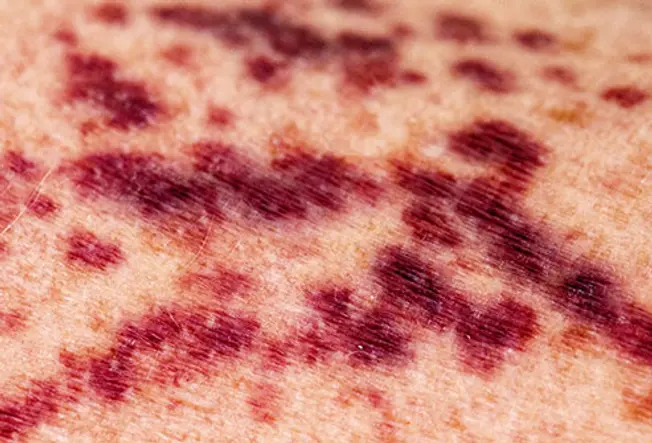
Could It Be Something Else?
10/13
Some conditions can lead to spots that look like bruises. Large ones are called purpura. Tiny red or purple spots are called petechiae. Problems that can lead to blood spots or easy bruising include:
- Bleeding disorders like hemophilia or von Willebrand's disease
- Liver disease, like cirrhosis
- Thrombocytopenia (when you don't have enough platelets in your blood)
- Cancers like leukemia, Hodgkin's disease, or multiple myeloma

Is My Diet to Blame?
11/13
Folic acid (folate) and vitamins C, K, and B12 help your blood clot. If you don't get enough of these, you may bruise more easily. Try eating more citrus fruit if you're low in vitamin C. Beef and fortified breakfast cereals are rich in B12. Green leafy veggies like spinach are good sources of vitamin K and folate.

Could It Be My Medication?
12/13
Blood thinners, aspirin, corticosteroids, and chemotherapy that fights cancer can cause black-and-blue marks. Don't stop taking your meds on your own, though. Talk to your doctor. They may be able to change your medicine or your dose so you bruise less or not at all.
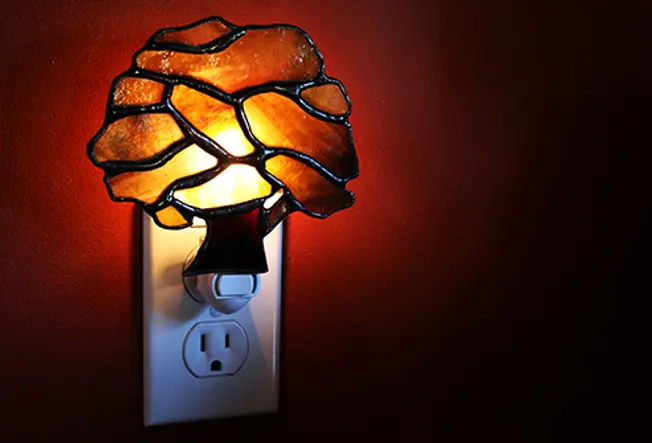
Can I Prevent Them?
13/13
You can't avoid all bruises, but you can lower your chances of getting hurt:
- Plug in a nightlight so you're not stumbling around in the dark.
- Remove trip hazards like throw rugs.
- Keep walkways clear of furniture or other things you can bump into.
- Wear protective gear like helmets or shin guards if you play sports.
IMAGES PROVIDED BY: Mercy Hospital New Orleans: "Bruises and Blood Spots Under the Skin." KidsHealth.org: "Bruises." The Mayo Clinic: "Easy bruising: Why does it happen," "Thrombocytopenia (low platelet count)." Cleveland Clinic: "Bruises." University of Rochester Medical Center: "Bruising or Black Eye (Ecchymosis)." Seattle Children's Hospital: "Skin Lump." Merriam-Webster: "Hemorrhage." National Institutes of Health Office of Dietary Supplements: "What Is Vitamin C and What Does It Do?" "What Is Vitamin B-12 and What Does It Do?" "What Is Vitamin K and What Does It Do?" "What Is Folate and What Does It Do?" American Cancer Society: "Chemotherapy Side Effects." Show Sources
Source: https://www.webmd.com/first-aid/ss/slideshow-bruise-guide
0 Response to "Picture of Dark Blue Shirt With Black Suit"
Enviar um comentário